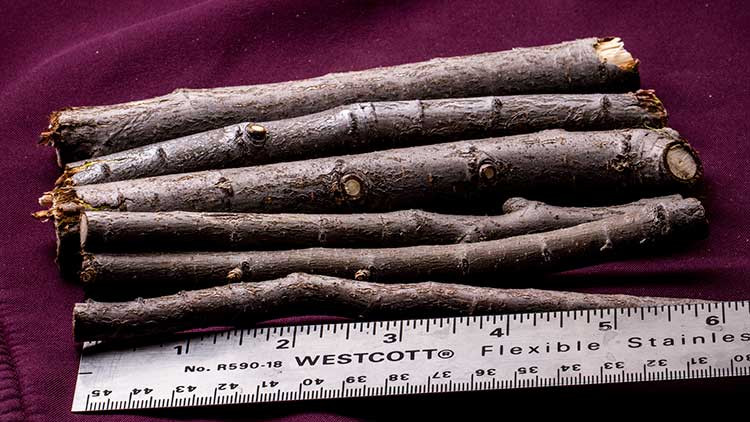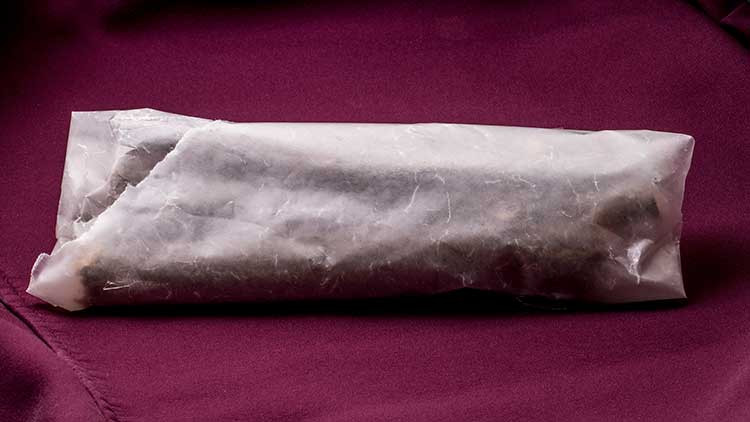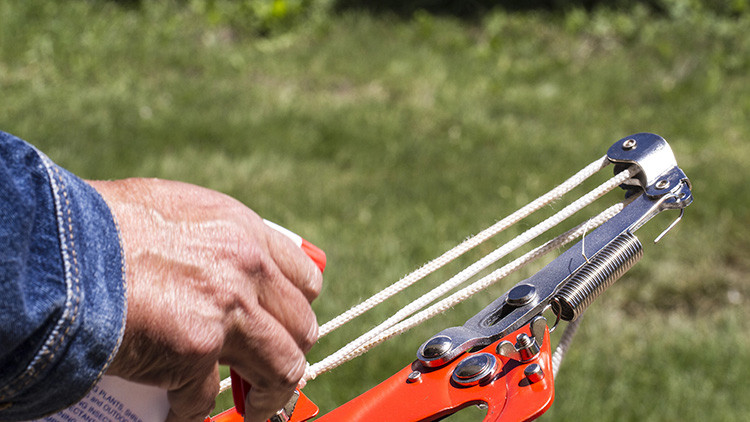Government mail service may be affected by the Canada Post labour disruption. Learn about how critical government mail will be handled.
All samples taken from private trees must be sent to the Alberta Plant Health Lab by a municipality, Agricultural Fieldman, arborists or the Society to Prevent Dutch Elm Disease (STOPDED). Arborists must contact the municipality, Agricultural Fieldman or STOPDED before sending a sample to the lab. Samples cannot be sent directly by a property owner.
Taking a good sample
- Only sample an elm tree between June 1 and September 30, and only from the infected area of the tree.
- Sterilize your pruning tools with methyl hydrate (gas line antifreeze), 70% alcohol or 10% bleach. The use of bleach can rust the pruning equipment. Wash equipment and spray with WD40.
- Select the branch on the elm tree that is showing the typical Dutch elm disease (DED) symptoms of leaf wilt or browning. This may require the use of a pole pruner. See Signs and symptoms of Dutch Elm Disease.
- Check the branch for brown staining in the cambium under the bark, a key symptom of DED. If staining is not found, try another branch on which the leaf symptoms appear. While staining is a strong indicator of DED, it is not always present in a diseased tree.
- Select a portion of the branch from the section of the tree showing symptoms. The sample should measure 1 to 2 cm (up to 1 inch) in diameter. Cut 5 or 6 pieces about 15 cm (6 inches) in length, from a part of this branch.
Figure 1. A collection of 6-inch branch pieces for sample submission

- Do not submit:
- pieces from which the bark has been peeled – samples must have bark intact
- with elm leaves or twigs, remove these from the cut pieces
- large branches
- Wrap all branch pieces in wax paper making sure that the wax paper surrounds the entire bundle, then secure with tape to prevent drying and maintain proper humidity. Do not place branches in a sealed plastic bag as it promotes moulding.
Figure 2. Branch samples wrapped in wax paper

- Place wrapped bundle in a paper envelope or paper bag.
- Fill out a DED Sample Submission Form with your name, complete location or street address, phone number and date sampled. Number each sample using your own sample code number for your records and include this number after the shipping date on the submission form. Code numbers can be as simple as #1 plus municipal initials for the first sample, #2 municipal initials for the second, etc. For example, L #1.
DED Sample Submission Form - Include any information about the tree or growing conditions on the submission form that would be helpful in identifying the problem.
- Mark your code number on the paper envelope or bag with a felt marker. NOTE: each elm tree sampled must have its own code number and submission form.
- Include the completed submission form with the sample for the lab. Be sure to keep a copy of the form for your records.
- To prevent deterioration, all samples should be kept in a cool place until reaching the lab.
- Send sample to the Alberta Plant Health Lab (address found on the submission form) using any private courier. Send sample early in the week. Avoid sending late-week submissions as the sample may deteriorate in transit.
- Tag the sampled tree to identify it as being tested. Make sure the same code number is on the tree, sample and DED Sample Submission Form.
- Disinfect the pruner head, secateurs and knife before taking the next sample. (This will prevent the possible spread from an infected tree to an uninfected tree).
Figure 3. Disinfecting the pruner head after sampling

Important points to remember
- Samples sent improperly take up important lab time. Re-sampling is the only course of action. Ship samples with proper documentation (submission form).
- Do not send very small twigs that are impossible to peel or culture, or dead branches.
- Solution: use branch pieces 1 to 2 cm (up to 1 inch) in diameter.
- Do not allow samples to accumulate for a week or more before shipping.
- Solution: ship weekly, early in the week; if a sample is taken later in the week, store it in the refrigerator then ship it the following Monday or Tuesday.
- Do not ship sample branches in a plastic bag.
- Solution: re-sample, wrap in wax paper, and place in paper envelope or bag.
Contact
To report suspect DED symptoms or for more information, call:
STOPDED Hotline at 1-877-837-ELMS (3567)
For DED compliance and enforcement issues, contact your local municipality or Agricultural Fieldman.